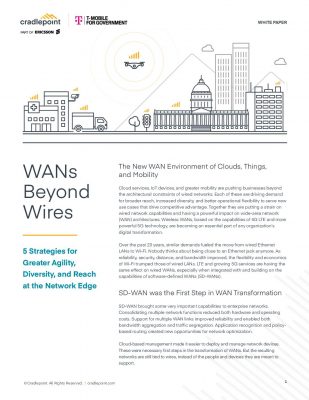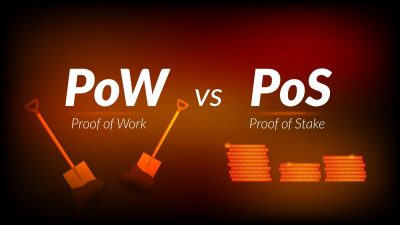Highlights:
- DLT is characterized by multiple nodes distributed across a network, each maintaining a copy of the ledger, and transactions are recorded with consensus among network participants.
- DLT enhances supply chain transparency by recording every step of the supply chain process on an immutable ledger.
Distributed Ledger Technology (DLT), a revolutionary breakthrough, has disrupted traditional centralized systems. It has garnered immense attention and potential across various industries, from finance and supply chain management to healthcare and voting systems.
The technology serves as the foundational framework and set of protocols that enable concurrent access, validation, and updating of records across a networked database.
The content presented will delve into the fundamentals of DLT, explore its key features, and discuss its transformative impact on the future of transactions, security, and decentralization. Let us commence with conceptual comprehension.
What is Distributed Ledger Technology?
At its core, DLT is a distributed and decentralized database system that records transactions across multiple nodes in a network. Unlike a centralized database controlled by a single entity, DLT operates on a peer-to-peer network, where each node maintains a copy of the entire ledger.
This ensures transparency, immutability, and resilience, making tampering with data challenging for malicious actors. With the glimpse of technology learned, we’ll move on to unfolding the overall functioning process.
How Distributed Ledger Technology Work?
Distributed technology, often exemplified by blockchain systems, operates on decentralized storage. In a distributed network, multiple nodes or computers collaborate to form a peer-to-peer network. Each node maintains a copy of the entire data or ledger, and any changes to the data are agreed upon through a consensus mechanism. This process ensures that no single entity has centralized control, enhancing transparency, security, and resilience.
When a new transaction or data update occurs, it is broadcasted to all the nodes in the network. Each node validates the transaction using predefined rules and cryptographic algorithms to ensure its legitimacy. Once a consensus is reached among multiple nodes, the transaction is added to a new data block.
Each block contains a unique cryptographic reference to the previous block, forming a chronological chain of interconnected blocks. This linking of blocks with cryptographic hashes makes it virtually impossible to alter or delete past records, providing an immutable and tamper-resistant ledger.
As more transactions are added, the blockchain expands, becoming an ever-increasing record of all historical transactions, visible and accessible to every participant in the distributed network. The technology’s distributed nature eliminates the need for intermediaries and single points of failure, making it an ideal solution for various industries seeking increased security and transparency in their processes.
Despite belonging to the identical technical domain, the DLT features highlight distinctions compared to blockchain.
Decoding the Differences: Distributed Ledger Technology vs. Blockchain
DLT is characterized by multiple nodes distributed across a network, each maintaining a ledger resemblance, and transactions are recorded with consensus among network participants. Blockchain, on the other hand, is a specific form of DLT where transactions are grouped into blocks, and each block is linked to the previous one using cryptographic hashes, forming an immutable chain of blocks.
While both DLT and blockchain share the principles of decentralization, transparency, and security, DLT can take different forms, such as Directed Acyclic Graphs (DAGs) or Hashgraph. These alternative DLT implementations aim to address some of the scalability and transaction speed challenges associated with traditional blockchain systems.
In summary, blockchain is a subset of DLT, representing a more diverse range of decentralized technologies extending beyond the role of blockchain.
After surfing through the comparative analysis, the content segment exhibits multiple kinds of technology with respective functions and utilities.
Types of Distributed Ledger Technology
-
Blockchain
The most well-known type of DLT, blockchain, arranges transactions into blocks that are linked using cryptographic hashes to form an immutable chain. It relies on consensus mechanisms like Proof of Work (PoW) or Proof of Stake (PoS) to validate and add new blocks to the chain.
-
Directed Acyclic Graphs (DAGs)
DAG-based DLT systems use a non-linear data structure, representing transactions as nodes. Each new transaction verifies two previous transactions, creating a directed acyclic graph. This approach can offer higher scalability and faster transaction processing than traditional blockchains.
-
Hashgraph
An algorithm uses a voting mechanism to achieve consensus among network nodes. It maintains a directed graph with cryptographic hashes representing the transaction order consensus.
-
Holochain
It is a framework that allows users to create their own DLT applications. It employs an agent-centric validation mechanism, where each user’s device processes transactions, providing scalability and efficiency.
DLT’s advantages observed across various domains can be explored hereafter.
Benefits of Distributed Ledger Technology
-
Decentralization
DLT operates on a peer-to-peer network, eliminating the need for a central authority or intermediary. This decentralization enhances trust and transparency, as all participants have equal access to the ledger, and no single entity controls the entire system.
-
Immutability
Once data is recorded on the DLT, it becomes virtually immutable. Each new block added to the chain is linked cryptographically to the previous one, creating a secure and tamper-resistant record of transactions. This feature ensures the integrity and accuracy of the data stored on the ledger.
-
Enhanced Security
Distributed ledger technologies employ advanced cryptographic techniques to secure data and transactions. Since the ledger is distributed across multiple nodes, it becomes more resilient to the impact of cyberattacks and single points of failure compared to traditional centralized databases.
-
Transparency
All participants in a DLT network can view and verify transactions in real-time. This transparency fosters high accountability and reduces the possibility of fraud or manipulation.
-
Improved Traceability
In industries like supply chain management, distributed ledger technology use cases enable end-to-end traceability of products. Each supply chain step can be recorded on the ledger, allowing stakeholders to track the origin, provenance, and movement of goods.
-
Smart Contracts
DLT platforms often support smart contracts, self-executing contracts with predefined rules. Smart contracts enable automated and tamper-proof execution of agreements, reducing the need for intermediaries and enhancing efficiency.
These remarkable pros of DLT can be better assessed with the numerous use cases the technology serves.
Applications of Distributed Ledger Technology
-
Supply Chain Management
DLT enhances supply chain transparency by recording every step of the supply chain process on an immutable ledger. This allows stakeholders to trace products’ origin, movement, and authenticity, combating counterfeiting and ensuring product quality.
-
Identity Management
DLT offers a decentralized and reliable way of securing digital identities. Individuals can control access to their personal data, reducing identity theft risk and providing a more reliable identity verification system.
-
Intellectual Property Rights
Distributed ledger technology services can be used to manage and protect intellectual property rights and digital ownership along with licensing details on an immutable ledger, reducing disputes and ensuring fair compensation for creators.
-
Gaming and Digital Assets
DLT enables creating and transforming digital assets, such as in-game items and virtual currencies, providing players with actual ownership and enabling seamless peer-to-peer trading.
-
Insurance and Cross-border Payments
DLT can streamline insurance processes by automating claims settlement, reducing fraud, and enhancing the efficiency of policy administration.
Moreover, DLT enables faster and more cost-effective cross-border transactions by removing intermediaries and reducing transaction fees.
The Bottom Line
Distributed ledger technology has opened doors to a new era of decentralized and secure transactions. Its innovative features, such as transparency, immutability, and decentralization, can potentially influence traditional industries and redefine how we interact with technology.
As DLT continues to evolve, it will undoubtedly shape a future where trust, efficiency, and accountability of transactions form the bedrock of our digital world. More technology-related whitepapers and associated content can be explored here for the latest insights.





































































